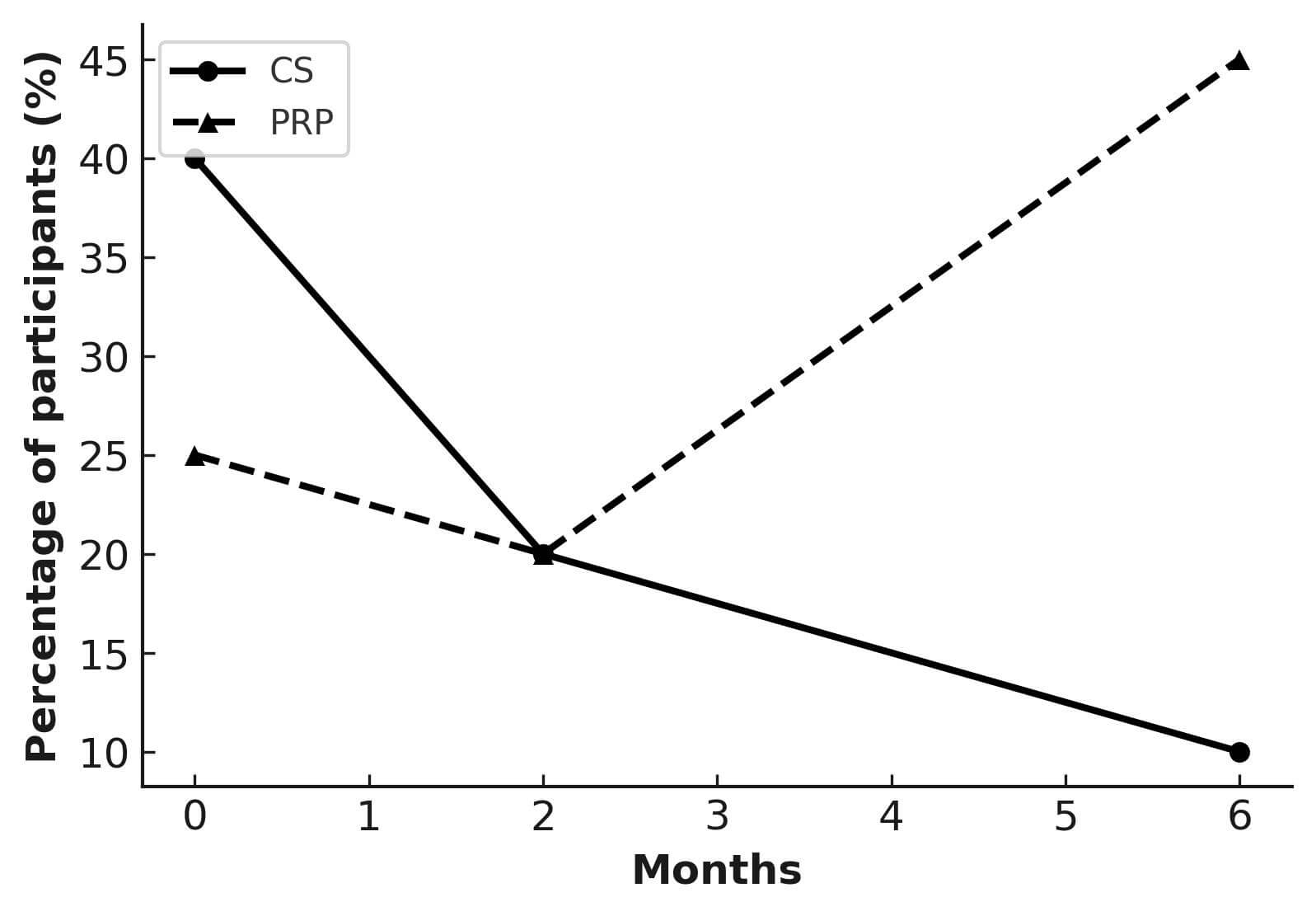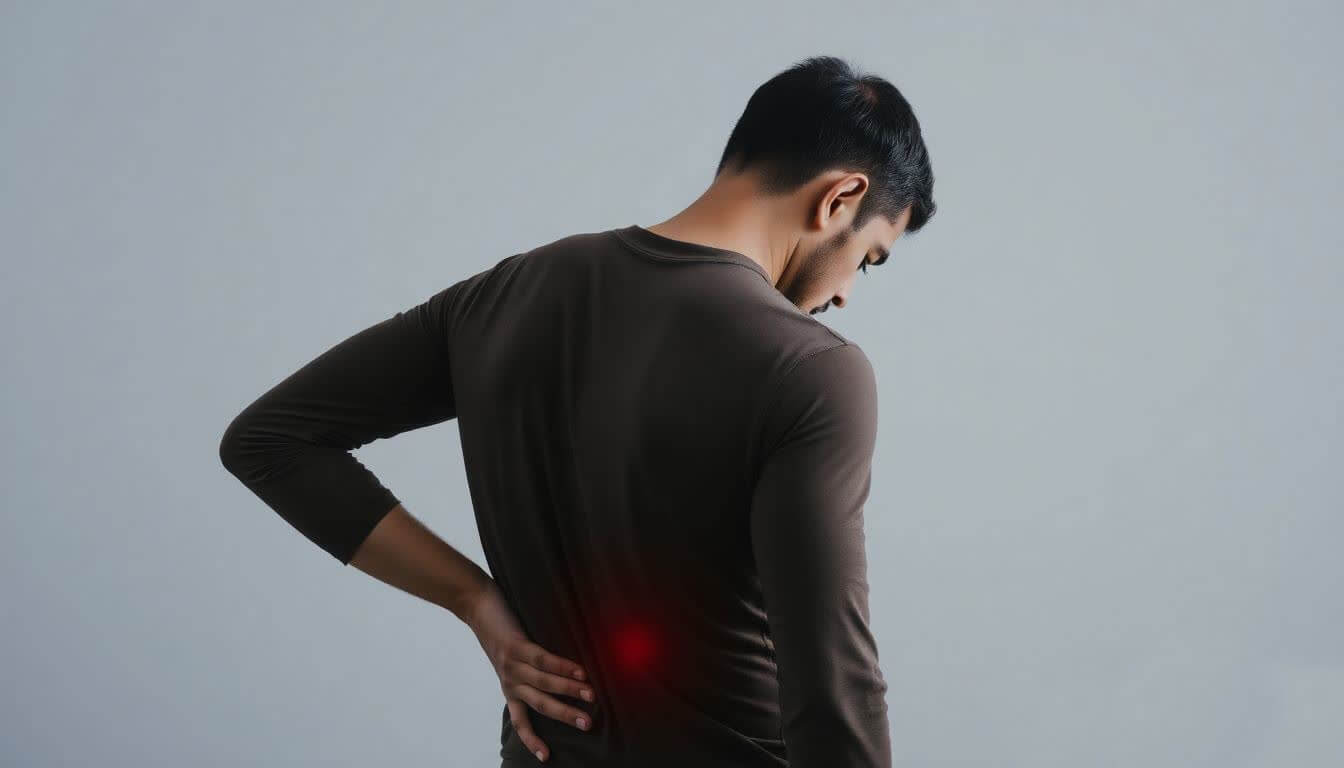Chronic low back pain, defined as lumbar pain persisting for 12 weeks or more, occurs in about 13% of U.S. adults. 5
Recent research confirms that ultrasound-guided PRP injections are the most effective treatment available for chronic low back pain.
Study Overview
This gold-standard clinical study examined a triple-blinded, randomized, multicentric controlled trial comparing the efficacy of intra-articular injections of Platelet-Rich Plasma (PRP) versus corticosteroids (CS) for chronic facet joint (Z-joint) low back pain. 1
Fifty participants with radiological signs of facet joint (Z-joint) osteoarthritis and chronic Z-joint–mediated low back pain were randomized into PRP and CS groups (1:1 ratio) in a triple-blinded design with a 6-month follow-up period. When compared to corticosteroid injections, PRP continued to provide greater than a 50% reduction in pain at 6 months and beyond.
This study is the first triple-blinded multicentric randomized controlled trial (RTC) on this topic. It demonstrates the safety and superiority of PRP for chronic osteoarthritis Z-joint mediated low back pain at 6 months. This study represents a significant step in evaluating regenerative medicine approaches for chronic low back pain, offering a promising alternative to traditional corticosteroid injections.1
The following graph illustrates the percentage of participants who significantly improved their ODI* scores by more than the MCID** of 17 points at 1, 3 and 6-month follow-up:

Note that the PRP group improved at >3 times the rate of CS patients. ∗Significant difference between groups (p = 0.031). When you compare PRP’s low back mechanism of action which promotes tissue repair and regeneration,6, 7, 8 compared to the mechanism of action for corticosteroids, which promotes tissue weakening and disease progression, 9, 10, 11, 12 the choice is obvious.
Regenerative mechanisms of PRP for chronic low back pain6, 7, 8
-
- Anabolic action through growth factors releases, cellular proliferation activation
-
- Anti-catabolic action through degenerative proteinase (MMP, ADAMTS) inhibition and cellular apoptosis reduction
-
- Stem cell activation
-
- Angiogenesis stimulation through growth factors releases
-
- Anti-inflammatory action through anti-inflammatory cytokines releases and pro-inflammatory cytokine inhibition
-
- Immunological response activation through chemokines releases
-
- Pro-inflammatory macrophage (M1) polarization suppression and Anti-inflammatory macrophage (M2) polarization activation
-
- Inhibition of nuclear factor-B pathway
-
- Production of hyaluronic acid
Disease promoting side effects of Corticosteroid injections for chronic low back pain:
-
- Tendon rupture 9
-
- Osseous injury, including avascular necrosis 10, 11
-
- Calcification 12
More evidence for PRP’s superior low back pain relief
A network meta-analysis 2 found:
-
- Particularly effective in improving disability indices at 6 months follow-up
A 2024 systematic review and meta-analysis3 reported:
-
- PRP injections significantly improved chronic low back pain at 1-, 3-, and 6-months post-injection compared to controls
A systematic review4 found:
-
- Level 3 evidence supporting PRP use for discogenic low back pain Level 4 evidence for lumbar facet joint injections
Conclusion
The available evidence suggests that PRP injections may be the most effective treatment available for chronic zygapophyseal joint low back pain. Multiple randomized controlled trials have shown superior results compared to corticosteroid injections, particularly in long-term pain relief and functional improvement. Systematic reviews and meta-analyses support these findings, although they also highlight the need for more high-quality studies with longer follow-up periods. While the evidence is promising, further research is needed to establish PRP as a standard treatment for this condition.
*Oswestry Disability Index (ODI) is a questionnaire that measures the disability caused by low back pain.
**Minimal clinically important differences (MCID) are patient derived scores that reflect changes in a clinical intervention that are meaningful for the patient.
Dr. Noel Peterson, ND, DAAPM, is the Medical Director of Oregon Regenerative Medicine, and has practiced naturopathic medicine in Lake Oswego, OR, since 1978. He specializes in natural and regenerative cellular medicine, including Prolotherapy, PRP (Platelet Rich Plasma), and Autologous Stem Cell therapy. Peterson has taught prolotherapy nationally and internationally. In 2019, the Oregon Director Association of Naturopathic Physicians (OANP) and National University of Natural Medicine (NUNM) selected Dr. Peterson to be honored with naturopathic medicine’s prestigious Living Legend Award.
References
- Cauchon AM, Mares C, Fan XY, et al. Comparing the efficacy of intra-articular injection of Platelet Rich Plasma (PRP) with corticosteroids (CS) in patients with chronic zygapophyseal joint low back pain confirmed by double intra-articular diagnostic blocks: A triple-blinded randomized multicentric controlled trial with a 6-month follow-up. Interv Pain Med. 2024;3(4):100525. Published 2024 Dec 3. doi:10.1016/j.inpm.2024.100525
- Sanapati J, Manchikanti L, Atluri S, et al. Do Regenerative Medicine Therapies Provide Long-Term Relief in Chronic Low Back Pain: A Systematic Review and Metaanalysis. Pain Physician. 2018;21(6):515-540.
- Zhang X, Zhang A, Guan H, Zhou L, Zhang J, Yin W. The Clinical Efficacy of Platelet-Rich Plasma Injection Therapy versus Different Control Groups for Chronic Low Back Pain: A Network Meta-Analysis of Randomized Controlled Trials. J Pain Res. 2024;17:1077-1089. Published 2024 Mar 14. doi:10.2147/JPR.S444189
- Wu J, Zhou J, Liu C, et al. A Prospective Study Comparing Platelet-Rich Plasma and Local Anesthetic (LA)/Corticosteroid in Intra-Articular Injection for the Treatment of Lumbar Facet Joint Syndrome. Pain Pract. 2017;17(7):914-924. doi:10.1111/papr.12544
- Shmagel A, Foley R, Ibrahim H. Epidemiology of Chronic Low Back Pain in US Adults: Data From the 2009-2010 National Health and Nutrition Examination Survey. Arthritis Care Res (Hoboken). 2016;68(11):1688-1694. doi:10.1002/acr.22890
- Alves R, Grimalt R. A Review of Platelet-Rich Plasma: History, Biology, Mechanism of Action, and Classification. Skin Appendage Disord. 2018;4(1):18-24. doi:10.1159/000477353
- Rodríguez-Merchán EC. Intra-Articular Platelet-Rich Plasma Injections in Knee Osteoarthritis: A Review of Their Current Molecular Mechanisms of Action and Their Degree of Efficacy. Int J Mol Sci. 2022;23(3):1301. Published 2022 Jan 24. doi:10.3390/ijms23031301
- Vladulescu D, Scurtu LG, Simionescu AA, Scurtu F, Popescu MI, Simionescu O. Platelet-Rich Plasma (PRP) in Dermatology: Cellular and Molecular Mechanisms of Action. Biomedicines. 2023;12(1):7. Published 2023 Dec 19. doi:10.3390/biomedicines12010007
- Kamel SI, Rosas HG, Gorbachova T. Local and Systemic Side Effects of Corticosteroid Injections for Musculoskeletal Indications. AJR Am J Roentgenol. 2024;222(3):e2330458. doi:10.2214/AJR.23.30458
- Habib GS, Saliba W, Nashashibi M. Local effects of intra-articular corticosteroids. Clin Rheumatol. 2010;29(4):347-356. doi:10.1007/s10067-009-1357-y
- Berthelot JM, Le Goff B, Maugars Y. Side effects of corticosteroid injections: what’s new?. Joint Bone Spine. 2013;80(4):363-367. doi:10.1016/j.jbspin.2012.12.001
- Habib GS. Systemic effects of intra-articular corticosteroids. Clin Rheumatol. 2009;28(7):749-756. doi:10.1007/s10067-009-1135-x



